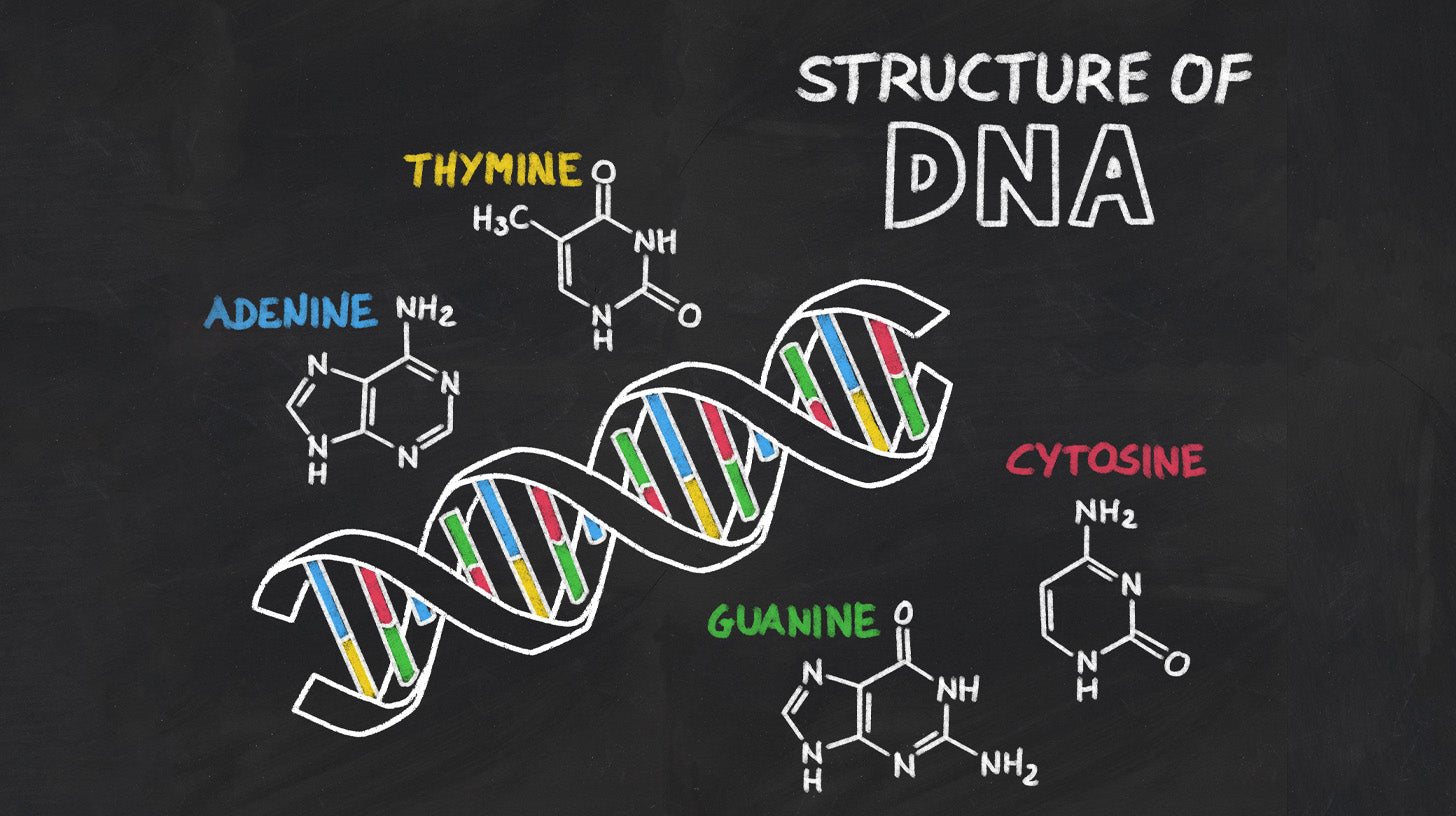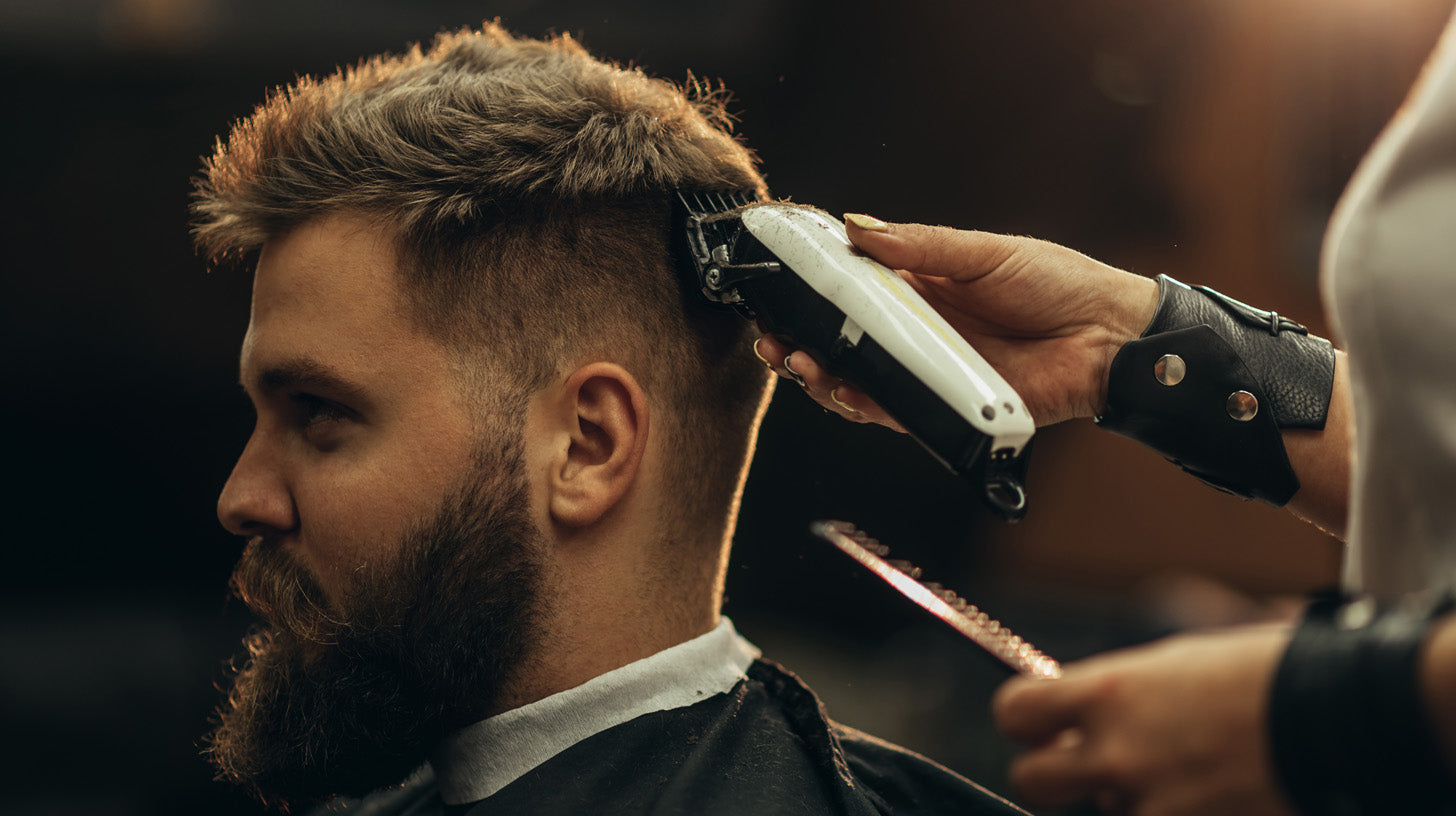Unlocking Your Locks: Demystifying Terminal Hair Length and Its Significance

For those who consider hair more than just a biological feature, the term "terminal hair length" triggers a world of curiosity and, often, a whirlwind of questions.
What does it really mean? Is there a way to control it? And how does it affect your hairstyle's potential? This article combs through the topic, aiming to untangle the facts from the myths of terminal hair length.
Hair Growth Cycles 101
Before delving into the specifics of terminal length, it's crucial to grasp the complex process of hair growth, often referred to as the hair growth cycle. This cycle consists of three primary phases:
- Anagen Phase: The anagen phase represents the period of active growth in the hair cycle, during which hair follicles are busy producing new strands of hair. This phase is crucial for determining the overall length of the hair, as the duration of anagen can vary widely among individuals. Some may experience a shorter anagen phase, leading to naturally shorter hair, while others may have a longer phase, allowing their hair to grow longer before transitioning to the next stage of the hair cycle. The health and nourishment of the hair during this phase can significantly impact its quality and length.
- Catagen Phase: This is a transitional phase that signifies the cessation of active hair growth. During this period, the hair follicle begins to shrink and detach from the dermal papilla, a process that prepares the hair for its eventual shedding. This phase is crucial as it represents the end of the growth cycle and the beginning of the renewal process for hair follicles.
- Telogen Phase: This is considered a resting phase during which the hair ceases to grow and enters a period of dormancy. During this phase, the hair remains attached to the follicle but stops receiving nutrients and stops growing. It is a natural part of the hair's lifecycle, preparing it for eventual shedding. This phase can last for about 100 days for head hair, after which the hair is naturally shed from the follicle, being replaced by new growth.

The human body, unfortunately, does not follow these phases in unison across the spectrum. This is why, at any given time, different parts of your head and facial hair are experiencing hair loss, hair growth, and resting stages.
Defining Terminal Hair and its Characteristics
The term "terminal hair" is used to describe the type of hair that is thick, long, and pigmented, commonly found in specific areas of the human body such as the scalp, face, armpits, and pubic regions. This type of hair represents the final stage in the hair growth cycle, marking a significant evolution from its precursor, the vellus hair.
Vellus hair, or body hair, is characterized by their fine, short, and often less visible appearance, making them much lighter than terminal hairs.
Terminal hair, on the other hand, is thicker hair due to its increased melanin content, providing not only a different aesthetic but also playing roles in protection and thermal regulation of the body. The transition from vellus to terminal hair is influenced by hormonal changes, particularly during puberty, which is why terminal hair becomes more prominent and extensive in distribution during and after this developmental stage.
What Makes Terminal Hair Different
Terminal hairs, once they reach full maturity, exhibit several distinctive characteristics that set them apart from other hair types, such as vellus hair. Notably, they possess a robust medulla, which is the innermost layer of the hair shaft, providing structural integrity and strength. They also boast the thickest diameter of any hair type, contributing to their visibility and texture.
Furthermore, terminal hairs have a virtually waterproof quality due to their dense structure and the oils they often come in contact with on the surface of the human body. This waterproofing ability is a crucial trait that vellus hair, which is much finer and lacks a developed medulla, does not possess.
Consequently, terminal hairs play a significant role in providing insulation and protection to the body..
Are All Terminal Hairs the Same?
Terminal hairs, which are found throughout the body in areas such as the scalp, eyebrows, pubic, and facial region, can vary significantly in thickness, length, and the extent of pigmentation.
These variations are primarily determined by genetics and hormonal influences, which dictate the characteristics of each individual's terminal hairs. This makes the pattern and qualities of terminal hairs as unique to an individual as their fingerprint, reflecting the complex interaction between genetic inheritance and hormonal levels throughout one's life.
What Influences Terminal Hair Length?
Believe it or not, your hair's grow-out potential isn't simply predestined from birth. It's subject to an interplay of various factors that could either extend or stunt its terminal length.

Genetics: The Almighty Decider
DNA plays the role of the master architect in determining how long your hair grows, essentially setting the stage for your maximum hair growth potential. While it might not seem like genes actively participate in the hair growth process, like an invisible hand guiding each strand out of the scalp, they are crucial in establishing the upper limit of your hair's length.
This genetic blueprint influences the growth cycle of your hair, determining how long each strand can grow before it falls out and a new one takes its place.
Understanding this can help you set realistic expectations for your hair length and focus on maintaining the health of your hair within its genetic potential.
Lifestyle Choices Matter
Your daily routines significantly impact the health and vitality of your hair. Consuming a nutrient-rich diet, maintaining good sleep patterns, and effectively managing stress can positively affect the anagen phase—the active growth phase of hair follicles. This, in turn, helps your hair grow closer to its terminal length, ensuring it remains strong, healthy, and vibrant.
Incorporating these practices into your daily life can lead to noticeable improvements in the appearance and condition of your hair.
Hormones and Health
The hormones testosterone and dihydrotestosterone (DHT) are crucial in regulating hair growth, influencing everything from the density to the length of hair. These hormones stimulate hair follicles, but an imbalance, often caused by genetics or hormonal changes, can lead to the shrinking of these follicles. This shrinkage results in shorter terminal hair lengths, which can significantly affect an individual's hair thickness and overall appearance.
Furthermore, underlying health conditions, such as thyroid disorders or nutritional deficiencies, can disrupt the normal hair growth cycle. This disruption can hinder the development of robust terminal hair, further impacting hair health as well as hair regrowth. Understanding these factors is essential for addressing hair growth issues effectively.
Differentiating Terminal Hair from Vellus Hair
Unlike the coarse and thick terminal hairs, vellus hairs are characterized by their delicate, soft texture, and often lack pigmentation. These finer, almost invisible hairs cover vast areas of the human body, serving primarily as a means of thermal insulation and evaporation cooling without the bulk or visibility of terminal hairs.
It's interesting to note that under certain conditions, particularly under the influence of hormonal changes during puberty, these vellus hairs can undergo a transformation. They can convert into terminal hairs, which are much darker, coarser, and more visible. This transition highlights the dynamic nature of our body's response to hormonal fluctuations, playing a significant role in the development of secondary sexual characteristics.
When Terminal Hair Develops
Most terminal hair, which is thicker and more prominent than the fine vellus hair it replaces, begins to appear on the body following significant hormonal shifts. These shifts are most commonly experienced during adolescence, a period marked by profound physical and hormonal changes. It is during this time that the anagen phase of hair growth—when the hair is actively growing—extends in duration.
This lengthening of the anagen phase facilitates more substantial hair growth, leading to the development of the characteristic hair patterns observed in adult bodies.
Understanding Individual Variations
Every head of hair is as unique as the individual it adorns, embodying the diverse beauty of human uniqueness. Some lucky individuals possess the remarkable ability to grow their hair at an astonishing pace, almost as if by magic overnight, while others find their hair growth to be a painstakingly slow process, akin to the slow and tedious drying of paint.
This vast spectrum of hair growth rates among people highlights the importance of recognizing and appreciating the beauty in these individual variations. Doing so not only helps in managing one's expectations regarding hair care and growth but also encourages a more personalized approach to hair care, ensuring that each person can find a routine that best suits their unique needs and growth patterns.
Ethnicity's Role in Hair Growth
Ethnicity profoundly impacts more than just the color of our skin; it extends to various biological traits, including the characteristics of hair growth. This is a fascinating aspect of human diversity.
For instance, African hair is known for its unique growth pattern, primarily due to a longer anagen phase. The anagen phase is the period of active hair growth, and in African ethnicity, this phase tends to last longer. This characteristic allows African hair to grow longer over time compared to hair types from other ethnicities.
On the other hand, East Asian hair typically experiences a shorter anagen phase, which results in a relatively slower growth rate and often shorter hair lengths when compared to African hair. This diversity in hair growth characteristics among different ethnic groups is a testament to the complex interplay between genetics and human physiology..
What's Normal for You
Comparing your hair length to that of others can often be misleading and counterproductive. It's important to remember that everyone's hair grows at different rates and has unique characteristics.
Instead, focus on what's normal for you. Pay attention to your hair's health and how it feels, rather than its length compared to others. Nurturing your hair in its natural state is likely to yield the healthiest results, ensuring it remains strong and vibrant. Embrace your individuality and let your natural beauty shine.
Why Terminal Hair Length is Relevant in Styling

Hair is our most versatile accessory, and its length plays a critical role in the styles we can achieve. Understanding and working with your hair's terminal length can improve the longevity and health of your style.
Long Hair, Don't Care
Individuals aspiring to grow their hair long must arm themselves with patience and develop a comprehensive hair care routine. This routine should focus on maintaining a healthy scalp environment, which is crucial for nurturing the anagen (growth) phase of the hair cycle for an extended period.
Proper nutrition, regular hydration, and the use of specific hair care products designed to strengthen and protect the hair as well as prevent hair breakage are all vital components of such a regimen.
By doing so, they can maximize the potential for achieving longer, healthier locks.
Short and Sweet
On the other hand, opting for shorter hairstyles can be a strategic choice for individuals seeking a low-maintenance grooming routine, as well as for those dealing with hair loss conditions that limit the ability to grow long, terminal hair.
Short hair requires less time to style and manage on a daily basis, making it an attractive option for people who prioritize convenience or who may be experiencing conditions like alopecia that affect hair density and length.
Tips for Maximizing Your Terminal Hair Length

The journey towards achieving long, thick hair can sometimes feel like a lengthy and challenging endeavor, yet the results are incredibly satisfying. To maximize your hair's growth and health, here are some detailed tips that can guide you:
- Nourish from Within: The foundation of luscious, strong hair lies in what you feed your body. A balanced diet overflowing with essential vitamins and minerals plays a pivotal role in fostering healthy hair growth. Prioritize protein-rich foods, as well as those high in biotin, and vitamins A and C, to provide your hair with the nutrients it needs from the inside out.
- Handle with Care: Our hair and beard suffer from our relentless pursuit of perfection, often becoming victims of over-styling, excessive heat, and rough handling. This can significantly inhibit their growth and health. It's crucial to treat our hair and beard with the utmost care, choosing protective styles and minimizing heat exposure. Equally important is the use of high-quality hair and beard care products, which nourish and protect, ensuring our hair and beard not only look their best but are also given the chance to thrive in their natural beauty.
- Stimulate Growth: An often overlooked aspect of hair care is scalp health. Regular scalp and face massages can significantly enhance blood circulation, creating a fertile environment for hair follicles to thrive. Additionally, occasional gentle exfoliation can help remove dead skin cells and product buildup, further encouraging healthy hair growth.
- Regular Trims: It may sound paradoxical, but getting your hair trimmed on a regular basis is essential for maintaining its health and length. Trimming helps prevent split ends and breakage, which, if left unaddressed, can cause your hair to become weaker and shorter over time. Aim for a light trim every 6-8 weeks to keep all of your hair the same length and in tip-top shape.
- Supplement Smartly: While a balanced diet is key for hair health, certain nutritional supplements can offer additional support. Omega-3 fatty acids, for example, are known for their anti-inflammatory properties and can help improve your hair's density and diameter. However, it's paramount to consult with a healthcare professional before introducing any new supplements to your routine, to ensure they're right for you and won't interact with other medications you may be taking.
By following these enhanced tips and dedicating yourself to a comprehensive hair care routine, you'll be well on your way to achieving the long, thick hair you've been dreaming of.
Conclusion: The Art of Terminal Hair Acceptance
In conclusion, understanding the dynamics of terminal hair length offers invaluable insights into the nuances of hair growth and how it varies across different ethnicities. By recognizing the influence of genetics and the critical phases of the hair growth cycle, individuals can better appreciate the unique characteristics of their hair.
Furthermore, adopting a holistic approach to hair care—encompassing nutritional, physical, and styling practices—enables one to nurture their hair, maximizing its health and potential length. Ultimately, the pursuit of achieving one’s ideal hair length, whether long or short, is deeply personal and requires patience, knowledge, and a commitment to self-care.
The art of terminal hair acceptance lies in celebrating one’s natural beauty, understanding the limitations, and working within them to express one’s unique identity. Through education, proper care, and a positive mindset, the potential to flaunt healthy, vibrant hair is within everyone's reach.


Leave a comment